
The meaning of a spiritual retreat can be different for different religious communities. Spiritual retreats are an integral part of many Buddhist, Christian and Sufi communities. There are many different types of spiritual retreats such as wellness retreats, mindfulness retreats, spa retreats, adventure retreats, detox retreats, yoga retreats, and religious retreats.

A tariqa is a religious order of Sufism, or specifically a concept for the mystical teaching and spiritual practices of such an order with the aim of seeking haqiqa, which translates as "ultimate truth".

The Mevlevi Order or Mawlawiyya is a Sufi order that originated in Konya, Turkey and which was founded by the followers of Jalaluddin Muhammad Balkhi Rumi, a 13th-century Persian poet, Sufi mystic, and theologian who started his life as a muslim. The Mevlevis are also known as the "whirling dervishes" due to their famous practice of whirling while performing dhikr. Dervish is a common term for an initiate of the Sufi path; whirling is part of the formal sema ceremony and the participants are properly known as semazens.
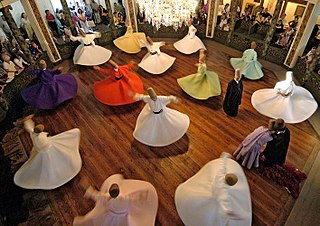
Sama is a Sufi ceremony performed as part of the meditation and prayer practice dhikr. Sama means "listening", while dhikr means "remembrance". These performances often include singing, playing instruments, dancing, recitation of poetry and prayers, wearing symbolic attire, and other rituals. Sama is a particularly popular form of worship in Sufism.

The Dances of Universal Peace (DUP) are a spiritual practice that employs singing and dancing the sacred phrases of the world's religions. Their intention is to raise consciousness and promote peace between diverse religions according to one stated goal. The DUP are of North American Sufic origin. They combine chants from many world faiths with dancing, whirling, and a variety of movement with singing.

Sufi whirling is a form of physically active meditation which originated among certain Sufi groups, and which is still practiced by the Sufi Dervishes of the Mevlevi order and other orders such as the Rifa'i-Marufi. It is a customary meditation practice performed within the sema, or worship ceremony, through which dervishes aim to reach greater connection with Allah. This is sought through abandoning one's nafs, ego or personal desires, by listening to the music, focusing on God, and spinning one's body in repetitive circles, which has been seen as a symbolic imitation of planets in the Solar System orbiting the Sun.
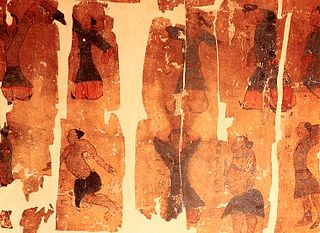
Daoyin is a series of cognitive body and mind unity exercises practiced as a form of Daoist neigong, meditation and mindfulness to cultivate jing (essence) and direct and refine qi, the internal energy of the body according to traditional Chinese medicine. These exercises are often divided into yin positions and yang positions. The practice of daoyin was a precursor of qigong, and was practised in Chinese Taoist monasteries for health and spiritual cultivation. Daoyin is also said to be a primary formative ingredient in the well-known "soft styles" of the Chinese martial arts, of tai chi, and middle road styles like Wuxingheqidao.
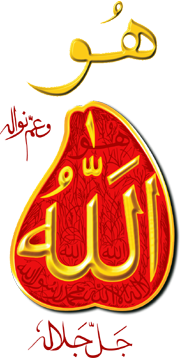
Dhikr is a form of Islamic worship in which phrases or prayers are repeatedly recited for the purpose of remembering God. It plays a central role in Sufism, and each Sufi order typically adopts a specific dhikr, accompanied by specific posture, breathing, and movement. In Sufism, dhikr refers to both the act of this remembrance as well as the prayers used in these acts of remembrance. Dhikr usually includes the names of God or supplication from the Quran or hadith. It may be counted with either one's fingers or prayer beads, and may be performed alone or with a collective group. A person who recites dhikr is called a dhākir.
A spiritual practice or spiritual discipline is the regular or full-time performance of actions and activities undertaken for the purpose of inducing spiritual experiences and cultivating spiritual development. A common metaphor used in the spiritual traditions of the world's great religions is that of walking a path. Therefore, a spiritual practice moves a person along a path towards a goal. The goal is variously referred to as salvation, liberation or union. A person who walks such a path is sometimes referred to as a wayfarer or a pilgrim.

Amrit Desai is a pioneer of yoga in the West, and one of the few remaining living yoga gurus who originally brought over the authentic teachings of yoga in the early 1960s. He is the creator of two brands of yoga, Kripalu Yoga and I AM Yoga, and is the founder of five yoga and health centers in the US. His yoga training programs have reached more than 40 countries worldwide and over 8,000 teachers have been certified.

Llewellyn Vaughan-Lee is a Sufi mystic and lineage successor in the Naqshbandiyya-Mujaddidiyya Sufi Order. He is an extensive lecturer and author of several books about Sufism, mysticism, dreamwork and spirituality.
Dynamic meditation is a form of meditation in which physical actions are involved. The term appeared in the early 1970s when Osho's descriptions of his "Rajneesh Dhyan Yoga," developed at meditation camps in the Indian mountains, were translated into English. His prototypical method is still named "Dynamic Meditation."

Gabrielle Roth was an American dancer and musician in the world music and trance dance genres, with a special interest in shamanism. She overcame depression and injury to create the 5Rhythms approach to movement in the late 1970s; there are now hundreds of 5Rhythms teachers worldwide who use her approach in their work. Her vision was to spread dance across the world, using the power of movement to heal body and spirit.
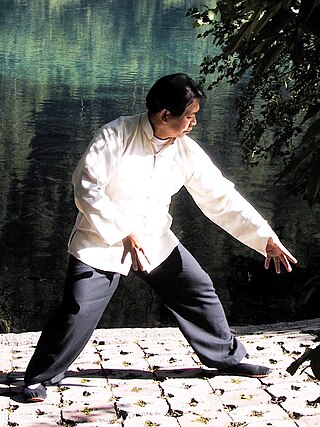
Qigong, is a system of coordinated body-posture and movement, breathing, and meditation said to be useful for the purposes of health, spirituality, and martial arts training. With roots in Chinese medicine, philosophy, and martial arts, qigong is traditionally viewed by the Chinese and throughout Asia as a practice to cultivate and balance the mythical life-force qi.
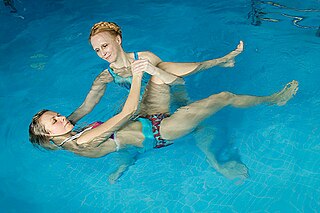
Watsu is a form of aquatic bodywork used for deep relaxation and passive aquatic therapy. Watsu is characterized by one-on-one sessions in which a practitioner or therapist gently cradles, moves, stretches, and massages a receiver in chest-deep warm water.

Somatics is a field within bodywork and movement studies which emphasizes internal physical perception and experience. The term is used in movement therapy to signify approaches based on the soma, or "the body as perceived from within", including Skinner Releasing Technique, Alexander technique, the Feldenkrais Method, Eutony, Rolfing Structural Integration, among others. In dance, the term refers to techniques based on the dancer's internal sensation, in contrast with "performative techniques", such as ballet or modern dance, which emphasize the external observation of movement by an audience. Somatic techniques may be used in bodywork, psychotherapy, dance, or spiritual practices.

Lataif-e-sitta are special organs of perception in Sufi spiritual psychology, subtle human capacities for experience or action. Depending on context, the lataif are also understood to be the qualities of consciousness corresponding to those experiences or actions.

Core Strength Vinyasa Yoga is a style of yoga as exercise created by American yogini Sadie Nardini in 2006. Central to this style is a movement referred to as a 'wave' (softening). The structure of this practice includes a 7-step framework which is applied to each pose within a sequence. Nardini incorporates aspects of Kundalini Yoga, Sivananda Yoga, Anusara Yoga, Iyengar Yoga, and portions of movement sequences from Ashtanga Vinyasa Yoga. Maintaining an internal focus on joy in the moment is part of the practice philosophy. This style integrates postures with learnings from many disciplines including physics, biology, and geometry, influenced by the works of Leslie Kaminoff. It incorporates traditional yoga philosophy from the Yoga Sutras of Patanjali. It emphasizes muscles that are deep within the body and includes the use of 'waves' in order to enter and exit poses. Examples include physical moves that activate muscles close to the spine—such as psoas and quadratus lumborum in order to build support for the body from within before generating outward expression of that movement. The purpose of deep core focused poses in this practice is to improve and deepen breathing. This perspective differs from other styles in which the purpose of deep core work is to stabilize the back. In this practice, keeping belly soft and core strong improve breathing. "Belly Bonfire" breath is one example of a deep core breath technique that involves focus and target of attention and breath with softer abs. Pelvis is viewed as the body's physical center of gravity in this system.
Marion Rosen was a German-American physiotherapist. She developed Rosen Method Bodywork and Rosen Method Movement. Under Rosen's guidance in 1980, the Rosen Institute (RI) was formed as the governing international organization that protects and sustains the quality and standards of Rosen Method. The Rosen Institute has affiliate training centers in 16 countries and has certified 1150 bodywork practitioners and 150 movement teachers.
Frank Jude Boccio is a teacher and one of the originators of mindful yoga. He is known both for his teaching in centres across America, and for his 2004 book Mindfulness Yoga: The Awakened Union of Breath, Body and Mind, which describes a practice that combines yoga as exercise and Buddhist meditational practice.













